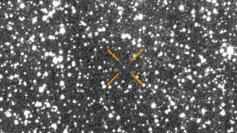Fake videos claiming that NASA has been hiding evidence of an alien spacecraft are spreading rapidly across social media - this time featuring the faces and voices of renowned physicists Michio Kaku and Brian Cox. The clips, which appear to show both scientists declaring that the interstellar object 3I/ATLAS is an extraterrestrial ship, have been confirmed as AI-generated deepfakes.
The doctored footage, shared widely on TikTok, X, and YouTube, convincingly imitates Kaku's speech and gestures, leading thousands of viewers to believe he had endorsed conspiracy theories about government cover-ups. In reality, both scientists have denounced the videos as fabrications, highlighting a growing problem at the intersection of artificial intelligence and misinformation.
"There has been a sudden rise of fraudulent unauthorized deep fake AI videos, impersonating me, misleading the public with crazy false claims that are not my own," Kaku wrote on X. He urged social media companies to act quickly, saying platforms like YouTube and TikTok must "police these videos better" and respond to takedown requests with more urgency.
TikTok later confirmed that it had begun removing the misleading videos for violating its misinformation policies. YouTube also reported taking down several of the fake clips, though copies continue to circulate on smaller accounts and repost hubs. The incident underscores the challenges tech companies face in curbing the rapid spread of synthetic media, particularly when it mimics trusted public figures.
The hoax videos specifically reference 3I/ATLAS, a real interstellar comet discovered by NASA, which some online communities have falsely labeled an alien craft. The conspiracy originated from misinterpretations of early research papers that speculated on unusual properties of the object. While scientists have determined that 3I/ATLAS behaves like a typical comet-emitting water vapor and carbon dioxide-its high velocity and trajectory have fueled persistent speculation online.
Astrophysicist Avi Loeb, who has previously entertained hypotheses about extraterrestrial technology in space, told reporters that researchers are monitoring 3I/ATLAS for any "unexplained acceleration" that might hint at artificial propulsion. However, NASA scientists have reiterated that current evidence points to a natural celestial object with no signs of alien origin.
Experts say the viral manipulation of such statements demonstrates how easily AI-generated misinformation can distort legitimate scientific inquiry. Deepfake detection specialists warn that the sophistication of generative models is advancing faster than regulatory or verification tools.
Both Kaku and Cox have called for industry-wide standards requiring AI platforms to watermark or label synthetic media. The physicists argue that without transparency requirements, the public could soon face an "epidemic of digital impersonation" undermining trust in science and journalism alike.



